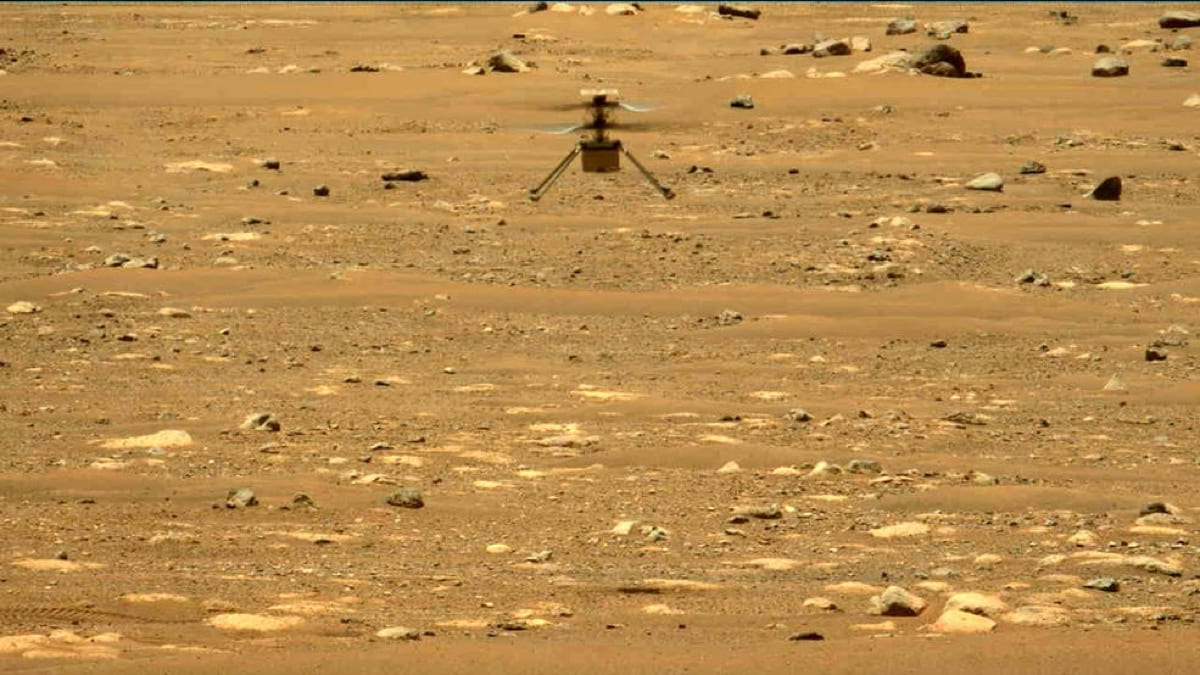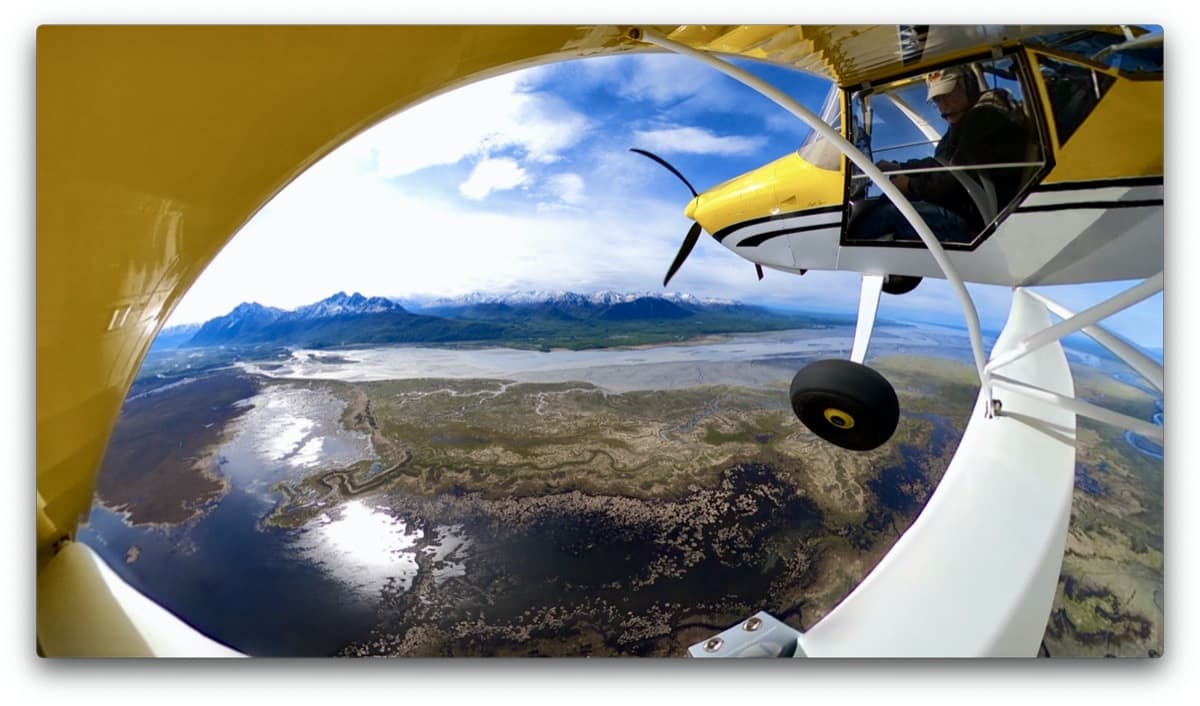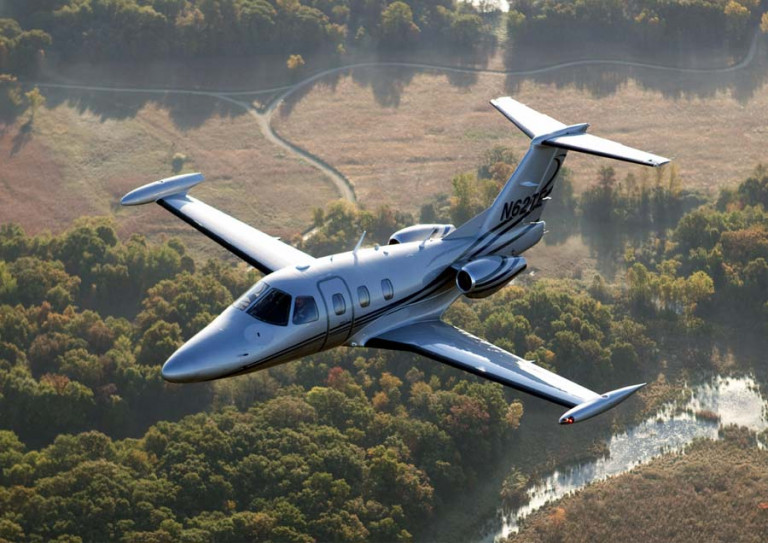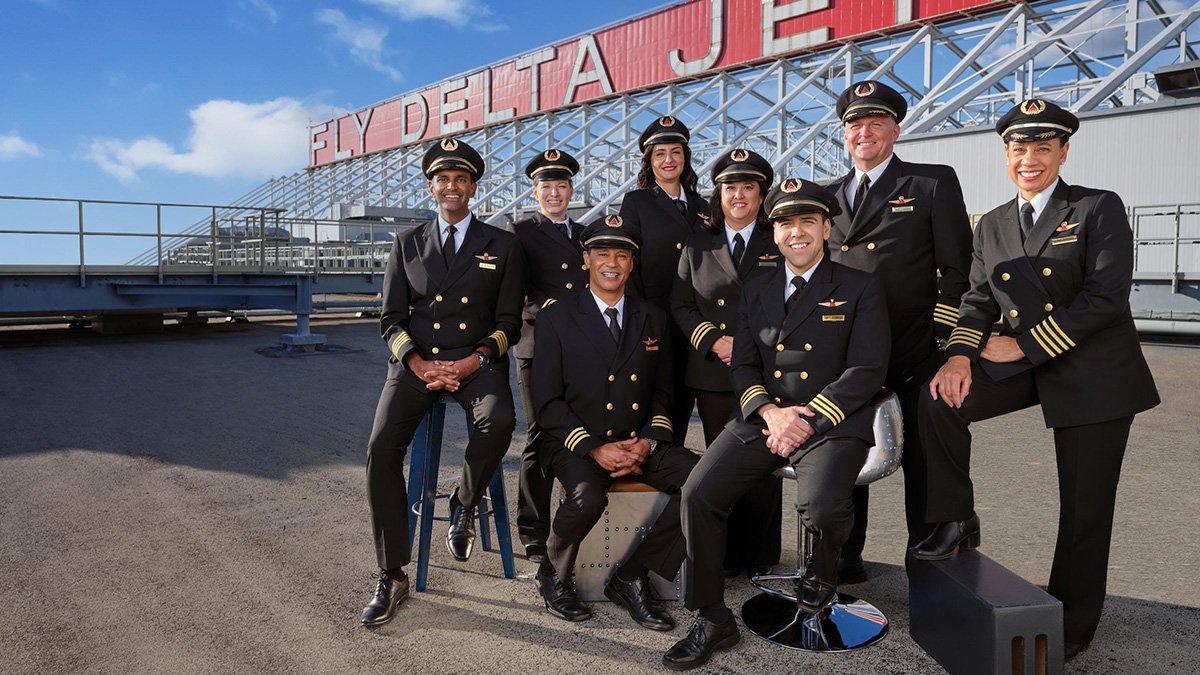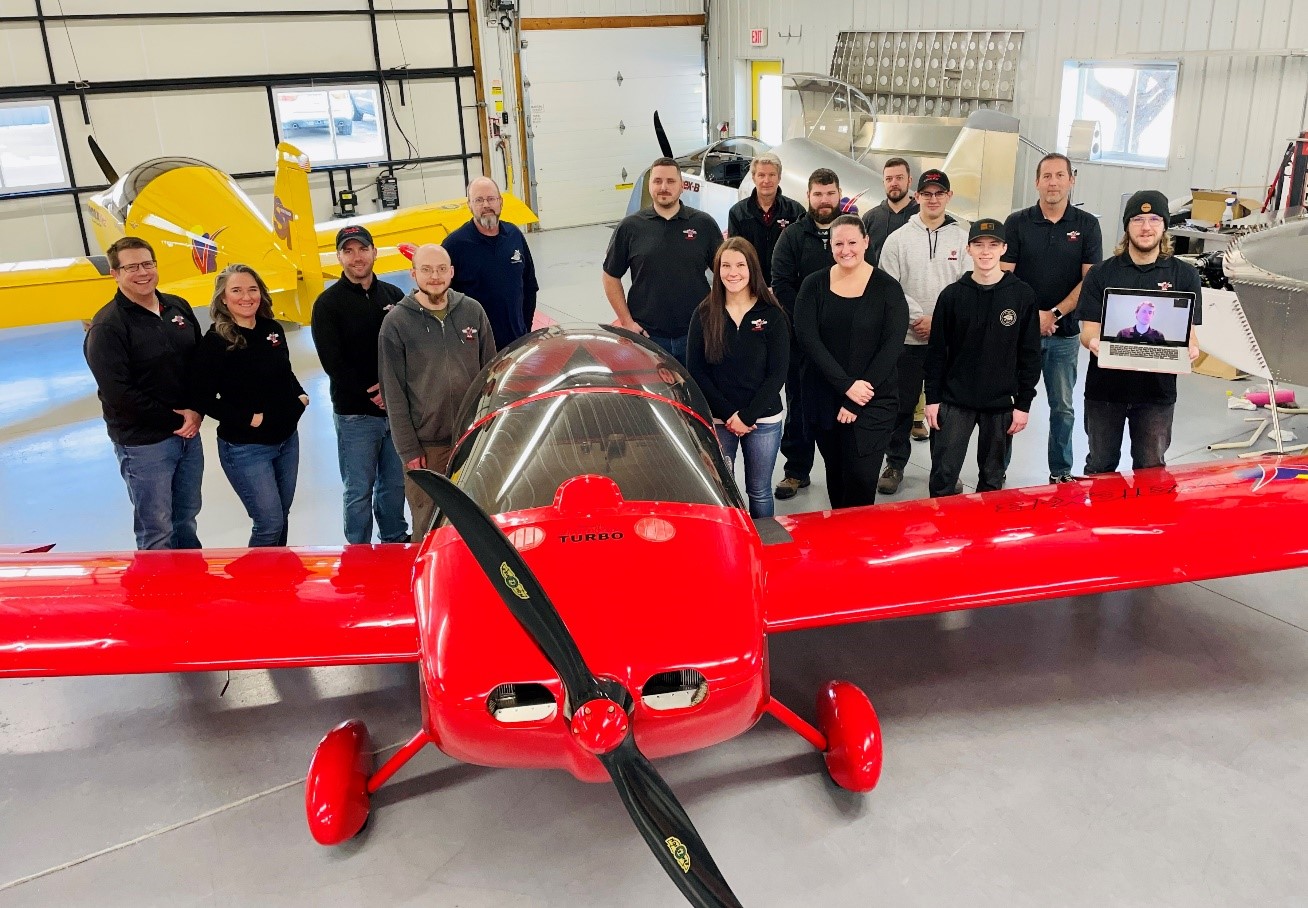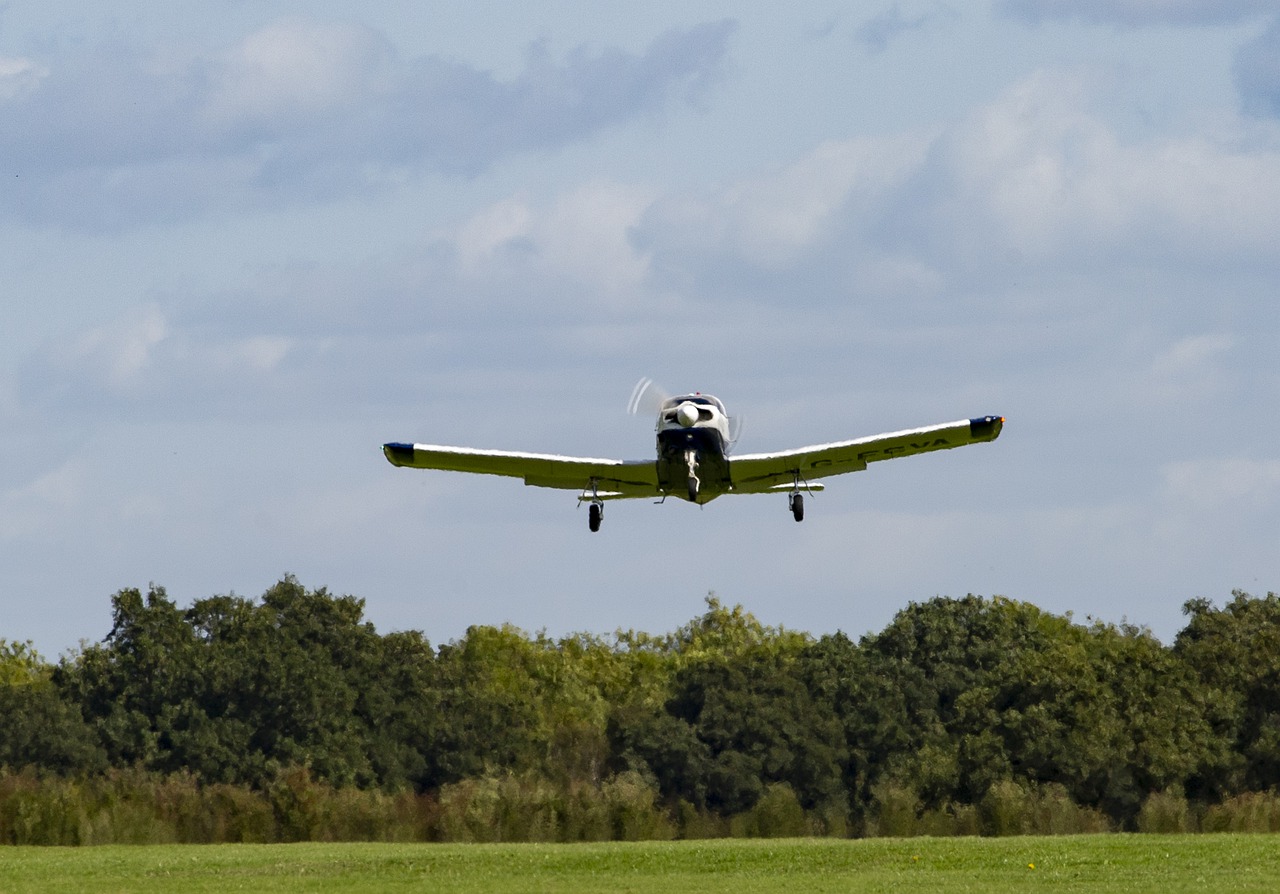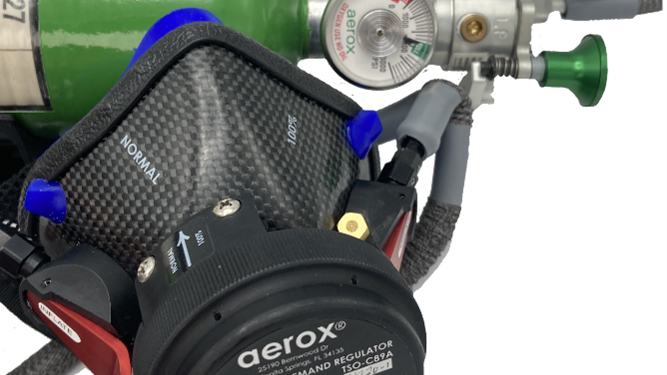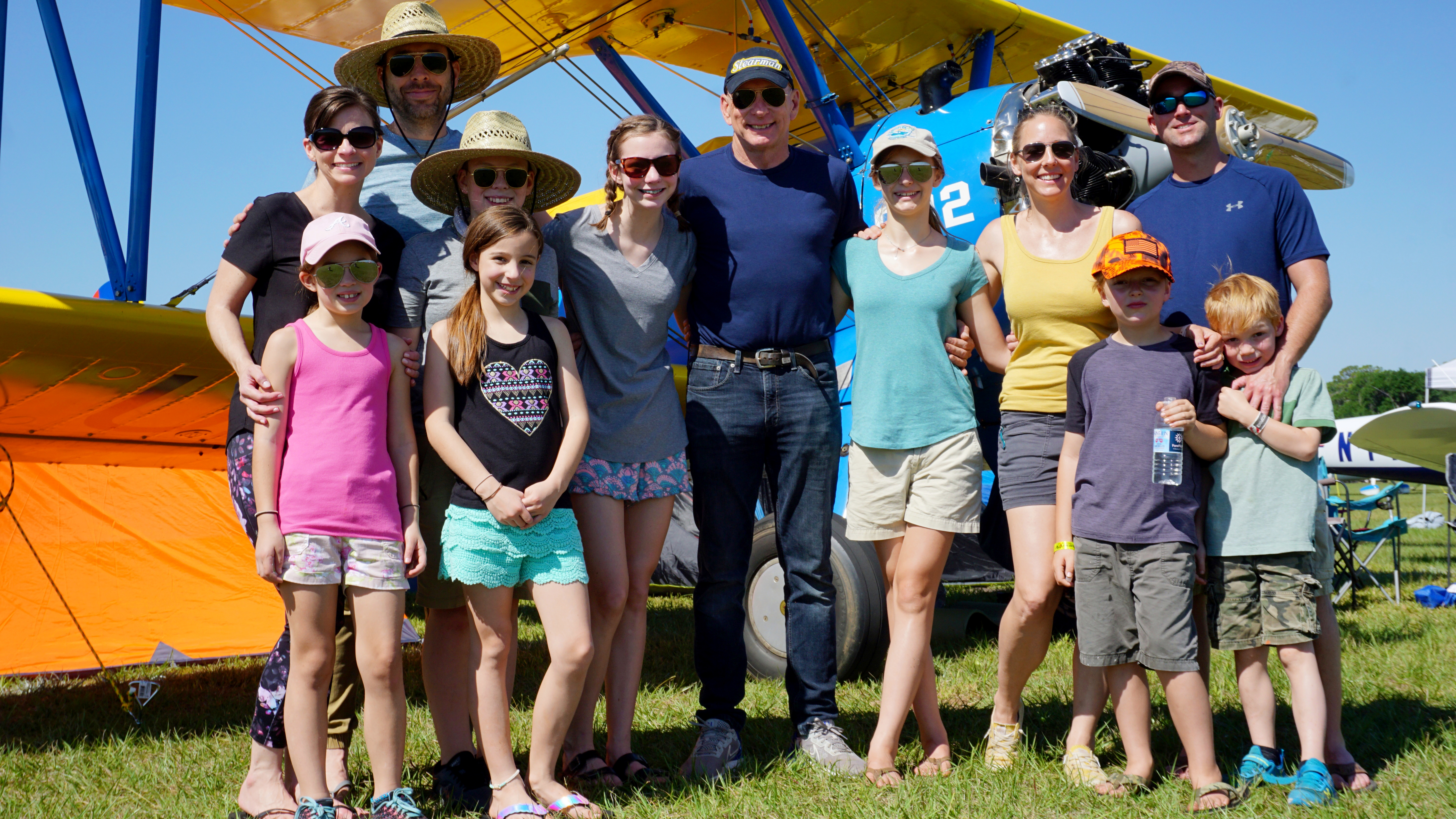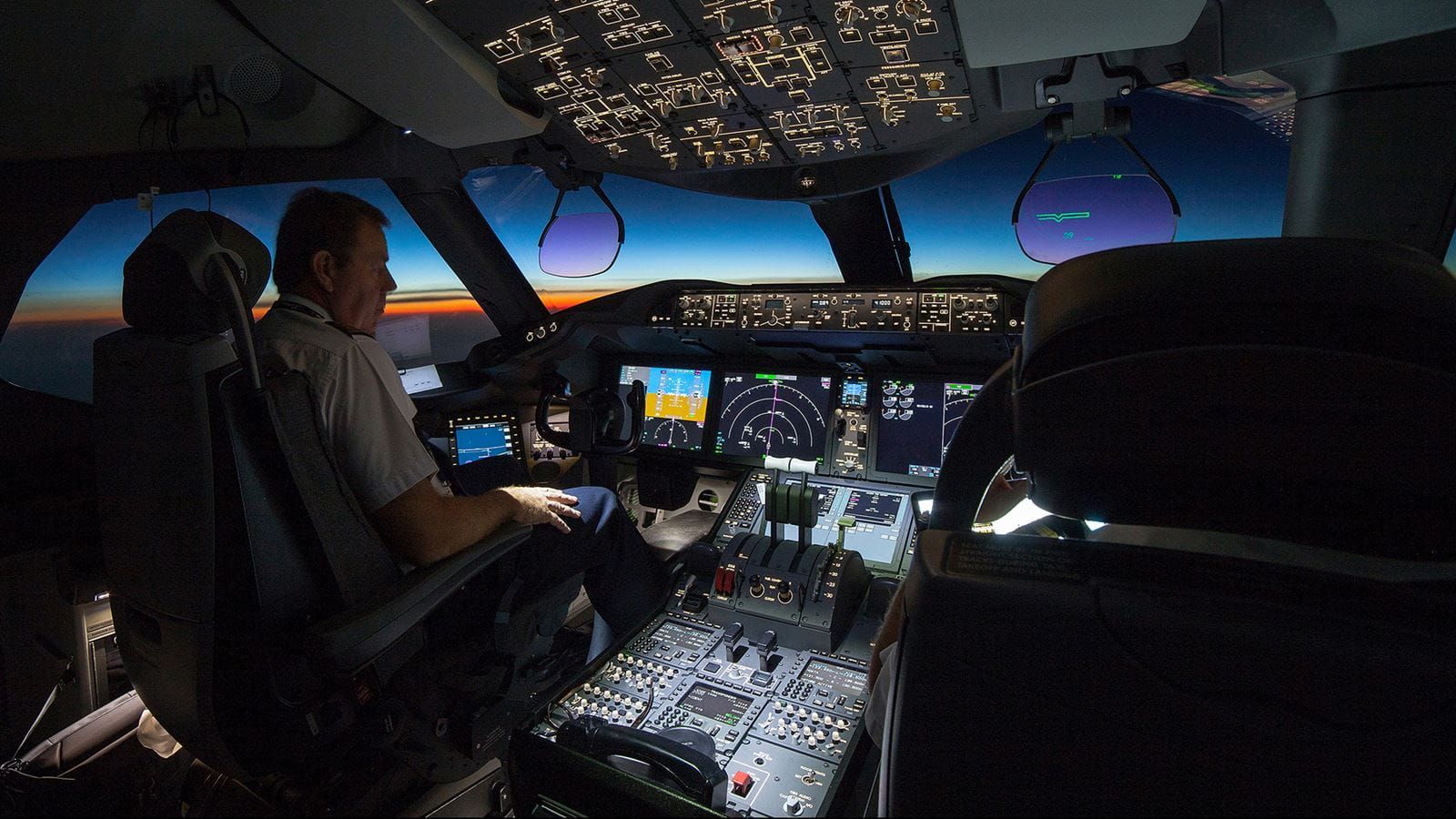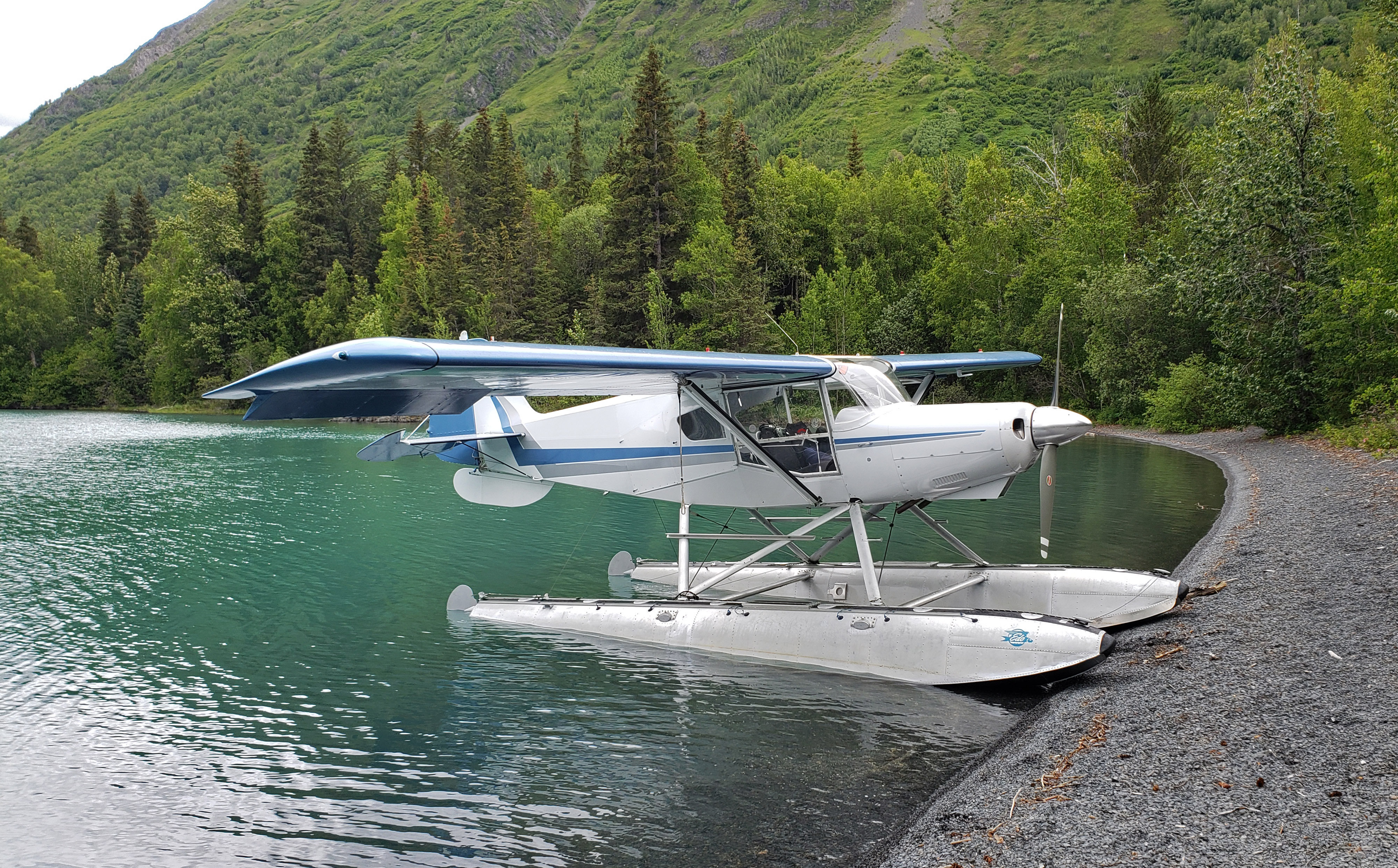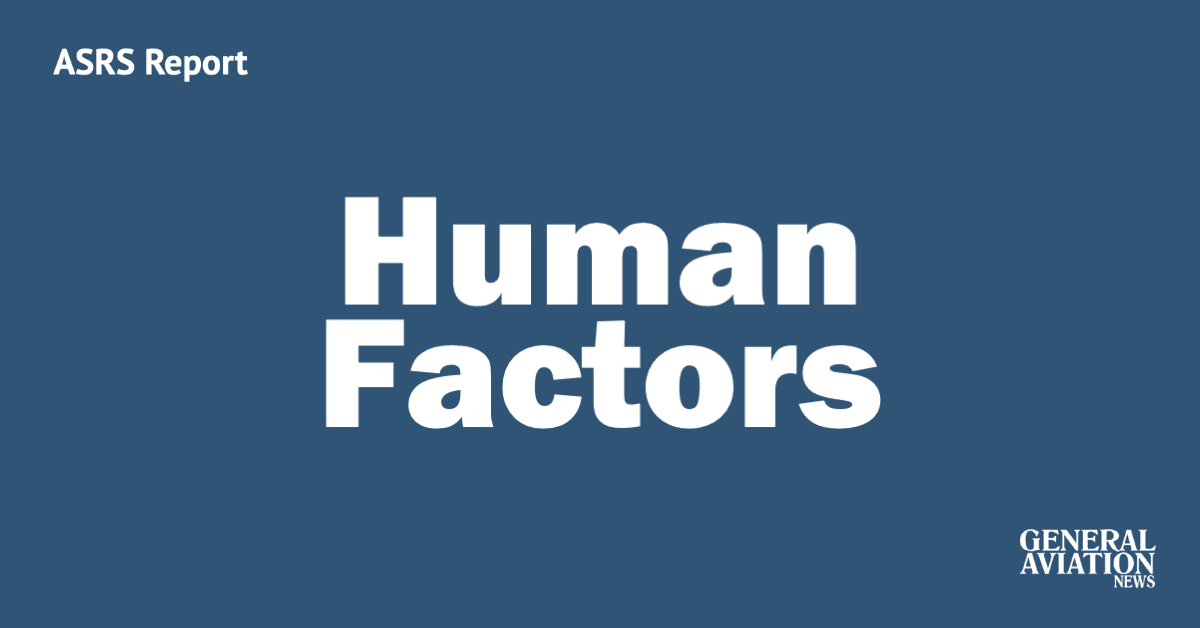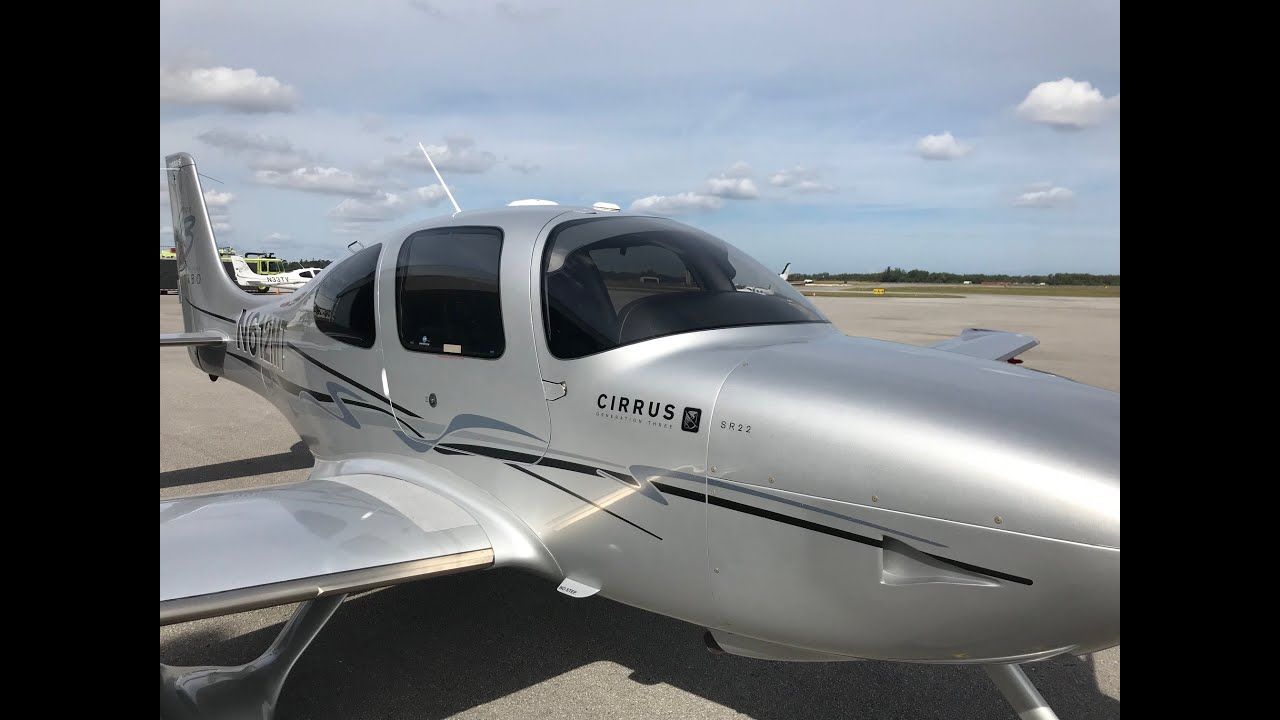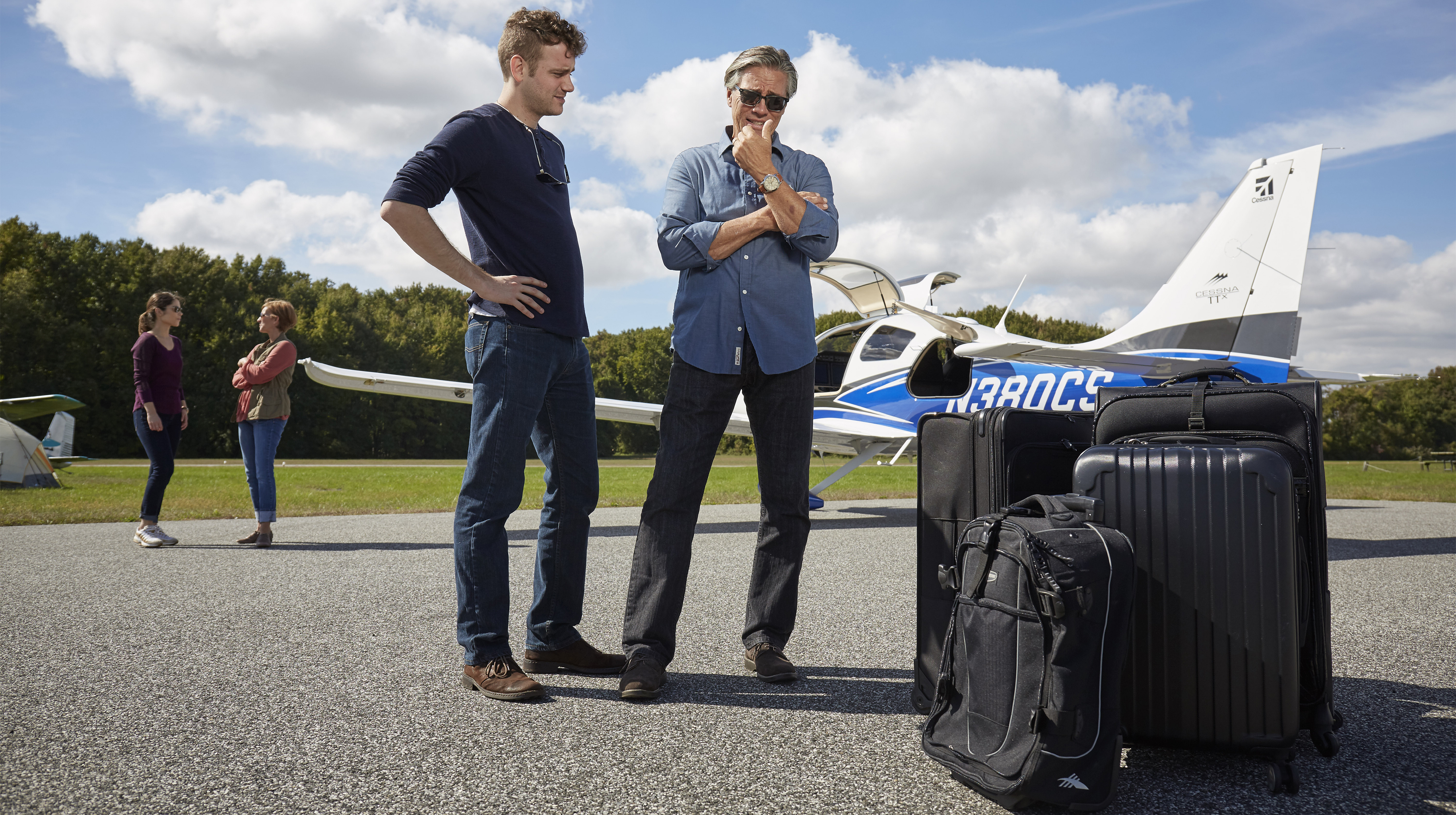Dassault Falcon 2000
Dassault Falcon 2000 user+1@localho… Tue, 09/20/2022 - 21:17 The Falcon 2000 is a twin-engine business jet produced by French manufacturer Dassault Aviation. Since the first variant of the series, the Falcon 2000, was certified in November...
The Falcon 2000 is a twin-engine business jet produced by French manufacturer Dassault Aviation. Since the first variant of the series, the Falcon 2000, was certified in November 1994 a total of six airframes have been certified as part of the series, with those airframes based on either the Falcon 2000 or 2000EX type. Out of the seven commercial designations of the Falcon 2000 series, one is based on the Falcon 2000 type, while the other six—the Falcon 2000EX, 2000EX EASy, 2000DX, 2000LX, 2000LXS and 2000S—are based on the 2000EX type. According to Dassault, “the Falcon 2000EX airframe is basically identical to the original Falcon 2000 in terms of design, overall dimensions, cockpit and cabin volume,” as is noted below. The current production airframes, the Falcon 2000LXS and 2000S, both represent commercial designations of the Falcon 2000EX type. Regardless of the differences between the Falcon 2000 and 2000EX types—as well as between the commercial designations based on them—the common type certificate for the Falcon 2000 and 2000EX is held by Dassault Aviation in Paris.
Program milestones of the Falcon 2000 program include the October 2000 launch—at the National Business Aviation Association (NBAA) convention—of the Falcon 2000EX, an event that was followed by the Oct. 25, 2001, first flight of that airframe. Another first-flight date of the series is the June 19, 2007, first flight of the 2000DX. With regard to the currently produced variants of the series, despite the fact that they have a common certification date, the Falcon 2000S and 2000LXS were launched a year apart, with the former announced in May 2011 at the European Business Aviation Convention and Exhibition (EBACE) and the latter announced over a year later at the October 2012 NBAA convention.
|
Type Designation |
Commercial Designation |
Certification Date |
|
Falcon 2000 |
Falcon 2000 |
Nov. 30, 1994 |
|
Falcon 2000EX |
Falcon 2000EX |
March 7, 2003 |
|
Falcon 2000EX EASy |
June 17, 2004 |
|
|
Falcon 2000DX |
Sep. 19, 2007 |
|
|
Falcon 2000LX |
April 23, 2009 |
|
|
Falcon 2000LXS |
March 19, 2013 |
|
|
Falcon 2000S |
Cabin and Baggage Capacity
Both the Falcon 2000 and 2000EX types have a common maximum passenger seating capacity of 19, as well as a requirement for a two-person flight crew. On the in-production 2000LXS and 2000S—which, as is noted below, have a common fuselage length—those passengers are accommodated in a cabin that has a length of 26 ft. 2 in., height of 6 ft. 2 in., maximum width of 7 ft. 8 in. and volume of 1,024 ft.3. Although Dassault does not state at which point the cabin width is measured, the length and volume of the currently produced Falcon 2000 airframes excludes the cockpit and baggage areas of the cabin. The cabin width is supplemented by the fact that those airframes have a maximum headroom of 6 ft. 2 in. Beyond that space in the cabin, both of those versions of the 2000EX type also have a 130.6-ft.3 baggage compartment that is certified to accommodate 1,600 lb. In addition to the 2000LXS and 2000S, those cabin dimensions—as well as the size of the baggage area—are is also common to the 2000LX.
The passenger comfort features of the 2000LXS include the presence of 18 “large windows” that provide the cabin with natural light, cabin air that is “refreshed constantly” and soundproofing that “trims decibels” from the cabin noise level. The cabin air quality and noise level, as well as the presence of natural light, are also promoted for the 2000S, with the presence of “sound-dampening engine mounts and advanced acoustic insulation” noted. In terms of cabin outfitting, the 2000S is described as being “available in the four most popular cabin configurations,” as well as in three “color harmonies.” Finally, the passenger entertainment and connectivity features of both airframes include high-speed internet and satellite communications (SATCOM) capabilities. Passenger entertainment is provided by Dassault’s FalconCabin HD+ cabin management system, an “all-digital, fully integrated system that provides Blu-Ray and fully supports portable media devices,” and which can be controlled from personal electronic devices.
Prior to the Falcon 2000LXS and 2000S, the cabin of the Falcon 2000EX was designed to be even quieter than that of the first-generation Falcon 2000. The improvements made to the 2000EX’s cabin include the installation of “new sound-insulation materials,” while the fact that airframe’s engines “were designed to be suspended on flexible attachments at both the front and rear” means that the engine’s sounds are dampened “before they are transmitted to the structure.”
Avionics
When the first Falcon 2000EX airframe was delivered in May 2003, it featured the then-Rockwell Collins’ ProLine IV avionics. However, as the commercial designation implies, beginning with the Falcon 2000EX EASy, Falcon 2000EX airframes came equipped with the company’s Enhanced Avionics System (EASy) flight deck that is based on Honeywell’s Primus Epic integrated avionics system. For example, when it was launched at the 2007 EBACE, the Falcon 2000LX was marketed as being equipped with the EASy flight deck “with Honeywell Primus Epic system, autothrottle and optional Flight Dynamics head-up guidance system.” The features of the EASy flight deck include four 14.1-in. screens in a landscape orientation and arranged in a “T” configuration. Those screens—which, along with the broader EASy system, are controlled by pair of Cursor Control Devices (CCD)—“display all information from aircraft sensors affecting systems, communications, navigation and flight management.” Of the four displays, two are primary display units (PDU) located “directly in front of the pilots” and “dedicated to short-term information;” while the other two displays—the inboard multifunction display units (MDU)—are vertically stacked “in the center of the instrument panel to be visible and accessible to both pilots,” and noted as displaying “pilot-selectable strategic information.” The CCDs, which are the “primary means of controlling the EASy flight deck,” allow for everything to “be done with Windows-like pull-down and pop-up menus using a trackball controller.” Other features of the EASy flight deck are its automatic checklists and graphical flight planning, with the former having an autosensing feature that checks an item off “as soon as the required action has been performed.”
The Falcon 2000S and 2000LXS both share a common avionics system, Dassault’s upgraded EASy II flight deck, which is also based on the Primus Epic integrated avionics system. Promoted as “a substantial upgrade from the original EASy system,” the EASy II incorporates a number of features that reduce pilot workload, with those features noted as “automating or abbreviating tasks that are repetitive, stressful or distracting.” Beyond those features, the EASy II installations on both the 2000S and 2000LXS also incorporate a number of safety-improving technologies such as improved symbology and the company’s SmartRunway Runway Awareness and Advisory System (RAAS), which is touted as reducing “the risk of runway incursions and excursions with audible alerts.” Also available as an option is an enhanced navigational package for the EASy II’s flight management system (FMS)—which allows airframes to utilize satellite-based augmentation systems (SBAS) to conduct localizer performance with vertical guidance (LPV) approaches—XM Graphical Weather and Controller-Pilot Datalink Communications (CPDLC).
Another avionics technology that is available on the Falcon 2000S and 2000LXS is an enhanced vision system (EVS) that is promoted as giving pilots “a clear ‘heads-up’ picture,” with the system being particularly beneficial during operations at night and in poor weather. Supplementing the situational-awareness benefits of the EVS system is the optional FalconEye combined vision system (CVS) which is described as being “a full-time, multispectral, high-definition CVS” that combines the EVS and a synthetic vision system (SVS) “into one view.” Certified by the European Aviation Safety Agency (EASA) in 2016, the primary benefits of the FalconEye CVS are found during taxi, takeoff and landing—as well as at night and in bad weather—with the system further described as being “the first head-up display (HUD) system to blend synthetic, database-driven terrain mapping and actual thermal and low-light camera images into a single view.” From a component perspective, the FalconEye is composed of “a fourth-generation multisensor camera that generates very-high-definition images,” which, when in SVS mode, shows a 30X40-deg. field of view. The benefit of that wide angle, described as being “one of the widest angles on any HUD,” is that it ensures “full coverage of the viewing area with no tunnel-vision effects.”
Mission and Performance
In addition to the primary markets for these Falcon airframes—private and business aviation—the Falcon 2000 is also utilized as a special-mission platform for government operators. Attributes of the Falcon airframe including its fuselage width, performance and efficiency are promoted as being of value to such operators, with the Falcon 2000EX-specific special-mission airplane dubbed the Falcon 2000 MRA (Maritime Multi-role Aircraft).
Although there are many differences between the Falcon 2000 and 2000EX types, they do share a number of performance limitations in common, including a maximum operating altitude of 47,000 ft. In contrast to that common limitation, the maximum operating speeds (MMO) differ, with the Falcon 2000 and 2000EX having variable limits of 0.87/0.85 Mach and 0.862/0.85 Mach, respectively. Based on a flight with six passengers, two crew and NBAA instrument flight rules (IFR) reserves, the range of the Falcon 2000S and 2000LXS differs by 650 nm, with those respective airframes having ranges of 3,500 nm and 4,150 nm. The former of those Falcon 2000EX variants is also promoted as having a takeoff distance (balanced field length)—based on sea-level altitude, standard conditions and the airframe’s maximum takeoff weight (MTOW)—of 4,325 ft. The 2000S’ 2,315-ft. landing distance is based on a flight conducted in accordance with FAA Part 91 regulations, at a typical landing weight, carrying six passengers and with NBAA IFR reserves. Based on the same criteria, the 2000LXS is capable of a takeoff distance (balanced field length) of 4,675 ft. and a landing distance of 2,260 ft. Beyond those landing distances, the approach speeds (VREF) of the 2000S and 2000LXS—also at a typical landing weight—are 107 and 105 kt. indicated airspeed (KIAS), respectively.
Other performance figures of the Falcon 2000S and 2000LXS promoted by Dassault Aviation include the ability of both to climb to directly to 41,000 ft., with the latter airframe able to do so in 20 min. For operations at high-elevation airports, as well as those that require a steep approach angle or where runway length is an issue, the takeoff and landing distances are also promoted by Dassault. With respect to high-altitude airports, the Falcon 2000LXS’ performance is highlighted, with that airplane described as having a “runway advantage” of 2,000 ft. and the ability to fly greater distances from such airports. According to Dassault, the takeoff and landing performance figures of both the 2000S and 2000LXS are improved because of the airframes’ “optimized, fully slatted wings.” To that end, when performing a takeoff at the airframe’s MTOW, the 2000LXS is promoted as using “1,000 ft. less runway than other airplanes in its class.” Operations are also noted as being possible at airports such as London City and Lugano, Switzerland—airports singled out by the manufacturer as being “challenging airports with short runways and steep approaches”—with the 2000S able to perform a “6-deg. steep approach,” which is noted as being twice as steep in comparison to competing airplanes. Another performance benefit of both the 2000LXS and 2000S is their ability to land at 90% and 95% of their respective MTOWs, a characteristic that is touted as saving operators both “time and money.”
Performance figures marketed for Falcon 2000 airframes prior to the Falcon 2000S and 2000LXS include the ability of the 2000DX to climb to 41,000 ft. in 17 min.—in a standard equipped airplane—while the 2000LX is able to perform the same climb in 18 min. 6 sec. at the airframe’s MTOW. The 2000LX’s 4,000-nm range assumes full fuel, six passengers and two crew, a 23,465-lb. basic operating weight and a speed of 0.80 Mach, standard conditions and no wind and NBAA IFR reserves. The takeoff distance (balanced field length) of the 2000LX—based on sea-level altitude, a temperature 15C above standard and a 42,200-lb. MTOW—is 5,878 ft., while the landing distance is promoted as being 2,630 ft. That latter performance figure is based on sea-level altitude, standard conditions, a 26,490-lb. typical landing weight, six passengers and NBAA IFR reserves, with the 113 KIAS approach speed based on the same landing weight, number of passengers and reserves. Although it is not specified by Dassault under what conditions it can be achieved, the 2000DX is touted as having an approach speed of 112 kt.
Variants
|
Falcon 2000 Specifications |
||
|
Type Designation |
Falcon 2000 |
|
|
Commercial Designation |
||
|
Maximum Passenger Seating Capacity |
19 |
|
|
Maximum Range (nm) |
3,040 |
|
|
Engines (2X) |
CFE Company CFE 738-1-1B |
|
|
Static Thrust Limit (lb.) |
Maximum Takeoff (Up to 37C/Sea Level/5 min.) |
Maximum Continuous (At 30C/Sea Level/5 min.) |
|
5,937 |
5,613 |
|
|
Maximum Takeoff Weight (MTOW)(lb.) |
36,500 |
|
|
Maximum Landing Weight (lb.) |
34,500 |
|
|
Usable Fuel (gal/lb.) |
1,814/12,155 |
|
|
Wingspan (ft.) |
63 ft. 5 in. |
|
|
Length (ft.) |
66 ft. 4.4 in. |
|
|
Height (ft.) |
23 ft. 2 in. |
|
|
Falcon 2000EX Specifications |
|||||||
|
Type Designation |
Falcon 2000EX |
||||||
|
Commercial Designation |
2000EX |
2000EX EASy |
2000DX |
2000LX |
2000LXS |
2000S |
|
|
Maximum Passenger Seating Capacity |
19 |
||||||
|
Maximum Range (nm) |
3,800 |
|
3,250 |
4,000 |
4,150 |
3,500 |
|
|
Engines (2X) |
Pratt & Whitney Canada PW308C |
||||||
|
Takeoff/Max Continuous Thrust Rating (lb.) (Standard Conditions/SL) |
6,998 |
||||||
|
Maximum Takeoff Weight (MTOW)(lb.) |
42,800 |
41,000 |
42,800 |
41,000 |
|||
|
Maximum Landing Weight (lb.) |
39,300 |
||||||
|
Usable Fuel (gal./lb.) |
2,497/16,730 |
2,193/14,694 |
|||||
|
Wingspan (ft.) |
63 ft. 5 in. |
70 ft. 2 in. |
|||||
|
Length (ft.) |
66 ft. 4.4 in. |
||||||
|
Height (ft.) |
23 ft. 2 in. |
||||||
CFE 738 Engines
Although all variants of the Falcon 2000 series based on the 2000EX type are powered by Pratt & Whitney Canada engines, the engine certified to power the Falcon 2000 type is the CFE 738-1-1B that, in addition to the static thrust limits noted above, has a normal-takeoff static thrust limit of 5,918 lb. in conditions up to 30C. That static thrust limit, as well as the maximum-takeoff thrust limit noted above, can be maintained for up to 5 min.
Pratt & Whitney Canada PW308C Engines
In contrast to the CFE engines that power the Falcon 2000, the second Falcon 2000 type to be certified, the 2000EX, is powered by a pair of Pratt & Whitney Canada (P&WC) PW308C engines that were “developed specifically for this program.” The 6,998-lb. takeoff and maximum-continuous thrust limits of the twin-spool turbofan engines are based on an uninstalled engine, sea-level altitude and standard conditions, with the takeoff limit again able to be maintained for up to 5 min. (or 10 min. with one engine inoperative). Furthermore, Dassault notes that the engine is flat-rated to 15C above standard temperature, while also offering advantages in emissions, fuel efficiency and maintenance accessibility. In terms of engine emissions, improvements to the engine’s combustion and fuel-delivery systems are touted as allowing the PW308C to have “best in class” performance in emissions and smoke produced. Indeed, the engine is able to meet the Committee on Aviation Environmental Protection’s CAEP/6 smoke and emissions standards, as well as the Zurich class 5 requirements for nitrogen oxide (NOX) and carbon monoxide (CO) emissions. One of the ways that emissions are reduced on airframes powered by the PW308C is by the engine’s TALON II combustor, which is described as being a “high efficiency” component that has “enhanced fuel atomization characteristics.” With regard to the PW308C’s fuel efficiency, it is promoted as offering operators “a fuel advantage of up to 35% over other large-cabin planes,” as well as a 10% advantage over smaller jets. Another component of the PW308C engine installation on the Falcon 2000EX type is a dual-channel full authority digital engine control (FADEC) system. Finally, these P&WC engines are described as being “optimized for ease of maintenance,” with a time between overhaul (TBO) of 7,000 hr.
Falcon 2000
Beyond the difference in certified engines with the Falcon 2000EX type, the Falcon 2000 type is also distinguished by its usable fuel capacity and maximum weights. With respect to the former, despite the maximum usable fuel capacity noted above, this type is also certified to a usable fuel capacity of 1,806 gal. (12,099 lb.). That fuel capacity is enabled by the inclusion of modification M3072, while the capacity in the table above is possible without the inclusion of that modification. Another specification that varies based on the incorporation of certain modifications is the Falcon 2000’s maximum weights, with those in the table above possible when modifications M57 and M1190 are applied. When only modification M57 is incorporated, the 36,500-lb. MTOW is retained, but the maximum landing weight (MLW) is reduced by 1,500 lb. to 33,000 lb. Finally, Falcon 2000s that do not incorporate modifications M57 and M59 not only have that reduced MLW, but also a reduced MTOW of 35,800 lb.
Falcon 2000EX
As is the case with the Falcon 2000, the maximum weights and usable fuel capacity of the 2000EX varies based on whether particular modifications are made to the airframe. For example, the MTOW and MLW noted above require that modifications M1826, M1842 and M3622 (or SB329) are applied. When only M1826 and M1842 are applied, the MTOW is reduced to 42,200 lb., while the 39,300-lb. MLW is retained. When only modification M1826 is applied, the MTOW is limited to 41,300 lb. and the MLW remains at 39,300 lb. However, if modification M1826 is not incorporated, the MTOW and MLW are reduced to 40,700 lb. and 38,300 lb., respectively. With regard to usable fuel capacity—which is substantially higher than on the Falcon 2000 type—the figure in the table above is based on the incorporation of M1826, a figure that is reduced to 2,470 gal. (16,045 lb.) when that modification work has not been performed. With modifications M1826 and M3072 applied, the usable fuel capacity of the Falcon 2000EX is 2,489 gal. (16,674 lb.). Prior to the certification of the 2000EX in March 2003, Dassault stated that the fuel system “features new pumps, an improved gauging system and a new FQMC (Fuel Quantity Management Computer) from Intertechnique,” while the pneumatic system utilizes technology from the Falcon 50EX. Other system changes in comparison to the Falcon 2000 include the source of bleed air used—both high and low-pressure bleed air are used on the 2000EX—and the “heavier duty landing gear and brake systems,” with the main landing gear being a modified version of what is found on the Falcon 2000, and the nose gear being that of the Falcon 900EX.
Falcon 2000EX EASy
All Falcon 2000EX airframes certified subsequent to the 2000EX are simply 2000EX airframes that have modifications applied to them and for which different commercial designations are used. The first such airframe, the 2000EX EASy, applied three modifications—M1691, M1745 and M1504—that improved the avionics, oxygen and pressurization systems, respectively. The improved avionics are the aforementioned EASy system, which became a standard feature from that version onward.
Falcon 2000DX
In contrast to the three modifications incorporated into the Falcon 2000EX EASy, the 2000DX applies only a single modification, M3000. This modification applied to the 2000DX, which was certified in September 2007, is described on the EASA Type Certificate Data Sheet (TCDS) as being “Major Level 1 nonsignificant.” Prior to certification, the 2000DX was introduced at the 2005 NBAA convention and made its first flight in June 2007 from Dassault’s facility in Bordeaux, France. Although the 2000DX retains the MLW of the previous variants—indeed, all airframes based on the Falcon 2000EX type are certified to a 39,300-lb. MLW—its MTOW is reduced in comparison to the 2000EX and 2000EX EASy, with that weight limited to 41,000 lb. Also, depending upon whether modification M3072 is applied, the usable fuel capacity varies between the above-noted limit without the modification applied to a 2,185-gal. (14,640-lb.) capacity when it is applied.
Falcon 2000LX
Launched on May 22, 2007, the Falcon 2000LX is the commercial designation for Falcon 2000EX EASy airframes that include modification M2846, which installed winglets onto the airframe. In order to accommodate those winglets, which are provided by Aviation Partners, Inc., “some structural and systems modifications” were necessary, including the addition of reinforcing straps on the upper and lower wing panels, as well as the reinforcement of the servo actuator door. Following the addition of the blended winglet, the “baseline wingspan of the 2000LX is 6 ft. 9 in. longer than the 2000EX.” According to the EASA TCDS, modification M3229 is also applied on the 2000LX, with that modification installing new slats while airframes are on the production line. With the application of modification M2846, the MTOW of the 2000LX is 42,200 lb., a limit that is further increased to 42,800 lb. when both modifications M2846 and M3390 are incorporated. The “new wing aerodynamics” of this Falcon 2000 airframe were promoted as reducing drag by “as much as 5%,” which results in efficiency and range improvements in comparison to the Falcon 2000EX upon which it is based. Indeed, when the airframe entered service, it replaced the Falcon 2000EX in Dassault’s family of business jets.
Falcon 2000EX Winglets
As is noted below with respect to the Falcon 2000LXS and 2000S, the winglets that have become a standard feature on the Falcon 2000EX series including and subsequent to the 2000LX—dubbed the High-Mach Blended Winglet by Aviation Partners—are promoted as reducing fuel consumption, as well as increasing range, payload and/or fuel reserves. With respect to the increase in range, the winglets increase that performance aspect of the airframe by 5% at 0.80 Mach, a figure that increases to “over 7%” at an airplane’s long-range cruise speed (LRC). According to Aviation Partners, other performance benefits of the High-Mach Blended Winglet include the ability to “fly faster at any given fuel burn,” with the fuel consumption at 0.80 Mach being approximately the same as for a standard airplane cruising at the LRC airspeed/Mach number. Climb rate and cruise altitude are also affected by the installation of these winglets, with the optimum cruising altitude increased by up to 1,500 ft. Performance charts published by Aviation Partners note that a Falcon 2000EX equipped with winglets adds approximately 1,500 ft. in altitude during a roughly 30-min. climb from 1,500 ft.—43,000 ft. for an equipped airplane versus 41,500 ft. for a nonequipped airplane—while the Falcon 2000 can attain an even higher altitude with winglets installed. In addition to the other fuel-burn reducing features of the 2000LXS’ and 2000S’ wing, the High-Mach Blended Winglets are promoted as reducing fuel burn “by an additional 5%,” with the 2000LXS’ overall fuel savings noted as being “up to 40% over competitors.” Beyond being standard on the Falcon 2000LX, 2000LXS and 2000S, the High-Mach Blended Winglets are available to be retrofitted on any in-service Falcon 2000-series airframe.
Falcon 2000LXS
Of the two in-production Falcon 2000-series airframes, the 2000LXS is the commercial designation for Falcon 2000EX EASy airframes that incorporate modification M5000, which makes “various improvements.” From Serial No. 263, Falcon 2000LXS airplanes have, in addition to M5000, modifications M3254, M2846 and M3390 applied, with the former and latter modifications applying to the EASy II avionics and weight and balance envelope increase for takeoff, respectively. With regard to maximum weights, the 2000LXS’ MTOW and MLW are the same as those noted above for the 2000EX and 2000EX EASy. An additional prerequisite for the application of modification M5000 is modification M3605, which, according to the EASA TCDS, removes the autobrake function of the airframe. Aerodynamic features of the 2000LXS include the previously discussed fully slatted wing—the airframe has extendable inboard and outboard slats—and High-Mach Blended Winglets, as well as slotted Fowler flaps, with the overall wing design described by Dassault as being “optimized for low-speed stability and high-speed efficiency.” In particular, the extendable inboard slats, when combined with the outboard slats, are promoted for their ability to provide the 2000LXS with “airfield agility” that is unique in its class of business jet. Beyond the performance benefits, the 2000LXS’ wing design, because of its ability to reduce drag and fuel consumption, is also touted as being able to reduce emissions and fuel costs, with each pound of fuel saved reducing carbon dioxide (CO2) emissions by 3.15 lb.
Falcon 2000S
Certified on the same day as the Falcon 2000LXS, the Falcon 2000S is the commercial designation for 2000LXS airframes that include modification M5001. As is the case with the 2000LXS, in order for modification M5001 to be applied to the 2000S airframe, other modifications must first be applied. Those modifications are M3000, which is described as the Falcon 2000DX definition, and the aforementioned M3390 that increases the weight and balance envelope on takeoff. In keeping with what is found on the 2000DX, the usable fuel capacity of the 2000S varies between 2,185 gal. and 2,193 gal., depending upon whether modification M3072 has been applied to a given airframe. Another way that the 2000S is distinguished from the 2000LXS is by its MTOW, with the 2000S’ limitation on takeoff 1,800 lb. less than that of the 2000LXS. However, much like the 2000LXS, the 2000S has the same aerodynamic, environmental and performance benefits that are provided by the airframe’s wing design and components. From a flight-control perspective, both airframes are also promoted as benefitting from Dassault’s experience in designing and producing military fighter airplanes, with the 2000S in particular featuring “the same double-servo actuators used on the Rafale fighter.”
Falcon 2000 MRA (Special-Mission Airframe)
Beyond the civilian variants of the Falcon 2000 series, Dassault also markets a multirole, special-mission version of the airframe, the previously mentioned Falcon 2000 MRA. That airframe, according to the manufacturer, “is developed for missions such as surveillance, reconnaissance, anti-surface attack, electronic warfare or training.” Focused on the requirements of navies, the Falcon 2000EX-derived airframe’s performance, flexibility and logistical footprint are promoted by Dassault as being of particular importance. With reference to performance and efficiency, the Falcon 2000’s speed—it is noted as being nearly twice as fast as a turboprop—takeoff performance, fuel consumption, range and endurance, maneuverability at low speed/altitude and payload are promoted as being valuable. In addition to limiting transit time, the speed of the airframe in comparison to turboprops is noted as being especially important to operators that perform quick-reaction alerts, as well as those which monitor large areas. The Falcon 2000 MRA’s range and endurance are enabled, in part, by the efficiency and fuel burn of the PW308C engines, while the airplane itself is operated by its flight crews using the EASy flight deck. In terms of crew accommodations, Dassault offers a basic configuration that includes two pilots and two operators/observers, as well as an enhanced configuration that retains the same number of pilots but doubles the number of operators/observers to four.
Depending on how a particular airframe is outfitted—with regard to the suite of equipment and sensors—the Falcon 2000 MRA can perform missions such as anti-submarine warfare, electronic and signals intelligence (ELINT/SIGINT), environmental protection, exclusive economic zone and maritime traffic surveillance, government action at sea, medical evacuation, monitoring of maritime approaches, naval forces training, personnel and light equipment transportation, search and rescue (SAR) and target acquisition and Over The Horizon Targeting (OTHT). With that said, the generic outfitting of the Falcon 2000 MRA includes four leading-edge slats and winglets, a life raft dispenser (for conducting SAR missions), a markers launcher, a multimode radar located under the fuselage, oversized observation windows, a retractable electro-optical turret and underwing store stations that can hold stores such as air-to-surface missiles, electronic warfare/simulation pods and target-towing equipment. Touted as allowing the efficient performance of “the various tasks dedicated to a multimission aircraft operated by a reduced crew,” the basic configuration of the airframe’s mission systems includes the aforementioned retractable electro-optic turret—which is noted as being a forward-looking infrared (FLIR) system that provides 360-deg. coverage—“a very-long-range, multimode air-to-surface radar with dedicated air-to-sea modes;” workstations that are multifunction, “equipped with color displays” and that feature “automatic analysis functions;” and a communications suite that includes SATCOM capabilities. In addition to the equipment included in the basic configuration, supplemental equipment in the form of data links, electronic-warfare systems and a self-protection suite can also be added to “other configurations” of the Falcon 2000 MRA.
Program Status
Since the first Falcon 2000 was delivered in 1995, all variants of series have been produced at Dassault’s facilities at Bordeaux-Merignac Airport in France.




 admin
admin 












